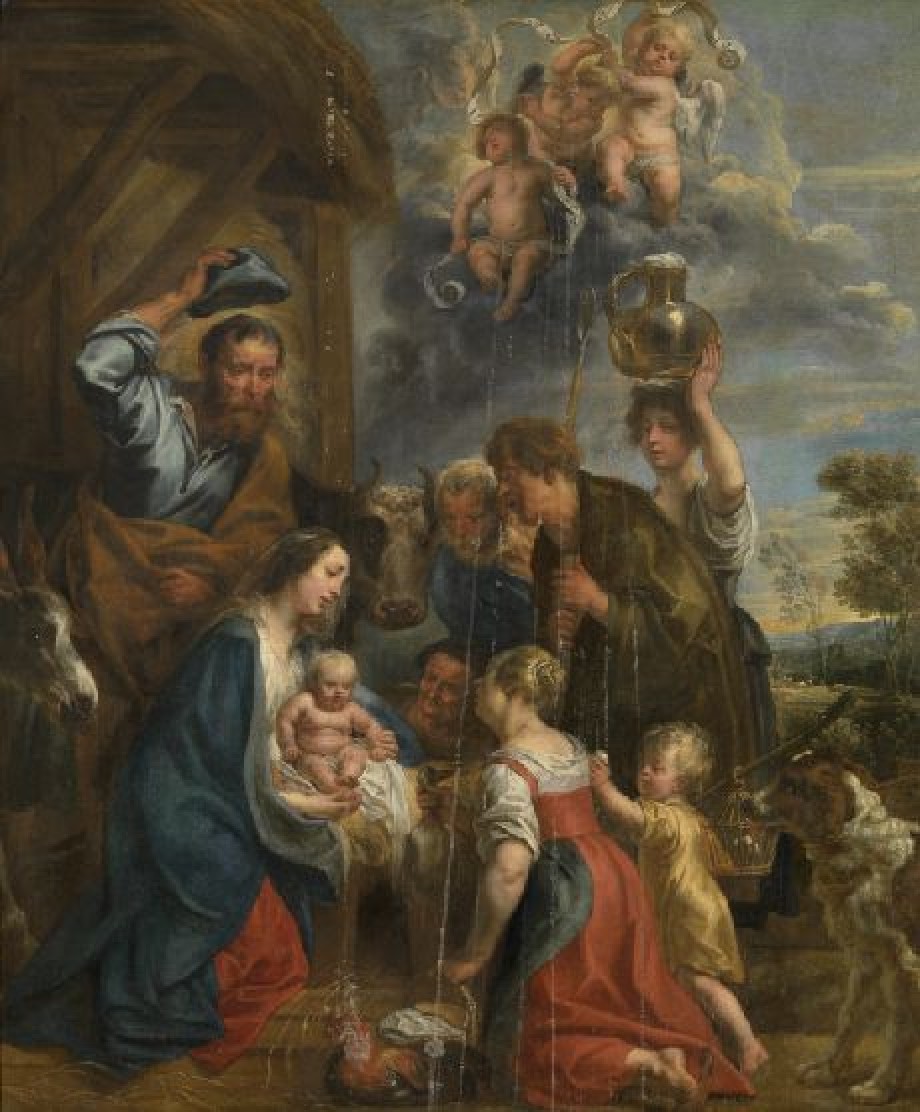The Beheading of Saint George

Date
(1643)Period
17 centuryCollection
Royal Museum of Fine Arts Antwerp
In this altarpiece Cornelis Schut has depicted the moment just before St George was beheaded. He has removed his armour and is kneeling down before the executioner, who has already drawn his sword. Soldiers and two boys with a dog are watching the scene. A pagan priest is vainly urging the saint to venerate a statue of Apollo. At the…
Read more
In this altarpiece Cornelis Schut has depicted the moment just before St George was beheaded. He has removed his armour and is kneeling down before the executioner, who has already drawn his sword. Soldiers and two boys with a dog are watching the scene. A pagan priest is vainly urging the saint to venerate a statue of Apollo. At the top an angel and a cherub come flying down with a martyr’s palm. According to the Legend aurea by Jacobus de Voragine, the two events took place at different times, but Schut is depicting them as if they coincided, as Rubens had previously done in his St George altarpiece of c. 1615 for the Church of St Gumarrus in Lier (Bordeaux, Musée des Beaux-Arts, inv. no. Bx M 7078).
Schut wanted to create the greatest possible emotional impact with this ambitious composition. A mass of details have been integrated in the scene, and the powerful contrasts between motion, light and colour capture the dramatic moment of the execution. Schut painted the altarpiece for the Young Archers Guild in the Chapel of the Circumcision, after he had won a contest with his competitor Thomas Willeboirts Bosschaert. The latter’s work has been lost.
A document in the guild archive reveals that the members had initially got in touch with Anthony van Dyck to paint their altarpiece. That project had been left unfinished on Van Dyck’s death in 1641. Daniël Papebrochius, the head of the Jesuit College in Antwerp states that a sketched design had already been made. That is presumably Van Dyck’s oil sketch in Christ Church, Oxford (inv. no. 247). Given the compositional similarities it seems likely that Schut took that sketch as his point of departure. In 1902 there was a sketched design by Schut in the collection of Edmond Huybrechts in Antwerp. A second sketch in Vienna (Gemäldegalerie der Akademie der bildenden Künste, inv. no. 597) was lost during the Second World War.
Read less










